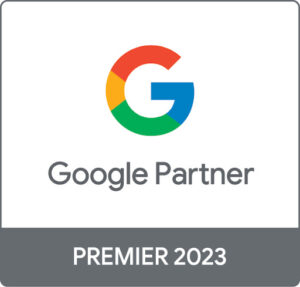Just when SEO’s across the world stopped reeling from successive updates and indexing bugs throughout the year, we were hit with the December 2020 Broad Core Algorithm update.
And it was a big one.
Not only was it a Core Algorithm update, which tends to hit SERP’s like an earthquake, but it was also a Broad Core update, meaning it affected every industry and category of website. Nobody was safe, not even the likes of Amazon, Yellow Pages or Getty Images.
Some saw drops of over 20-30 positions overnight, while others saw increases of the same amount. It wasn’t necessarily clear that there was any one factor that contributed to these drops or increases. Many websites that were hit felt as though they had been improving content across their site, while others hadn’t done as much but still saw positive increases.
It was one final kick in the teeth to a year that has seen a lot of volatility in the industry, and it’s easy to forget that this was just one of a few updates that occurred during the year. So we’re going to look back at some of the major updates of 2020, rounding off with the December update, and some of the things you can do to help your site recover or grow even stronger in SERP’s.
January 2020 Core Algorithm Update
Kicking off the year with the January Core Algorithm update, Google released a significant update that for some, reversed a lot of the positive increases they’d worked towards in 2019. As with every other Google update, it was clear they were continuing in the tradition of being tight-lipped about what had been adapted or changed.
Google describes its core algorithm updates as “significant, broad changes to our search algorithms and systems … designed to ensure that overall, we’re delivering on our mission to present relevant and authoritative content to searchers.”
Helpful, right?
What we do know was that some of the biggest hit industries were Health, Family & Community, Beauty & Personal Care and Finance. These industries rely heavily on informative, trustworthy content, so Google could have been improving the way it judges content, ensuring only the most useful, and more importantly, the most factual content is delivered to the user. There has always been a focus on navigating the user away from any content that could possibly be misleading, so this naturally lends itself to those industries.
Around the same time, Google also changed the way featured snippets were generated for the user. Previous to this update, your website could appear at what’s been called position ‘0’ for the featured snippet, but also position 1 when it came to standard SERP’s. This was no longer the case, meaning you could only appear for one of these two results.
Although featured snippets are great for visibility as they give you more real estate, users often don’t click on featured snippets, as they can get a direct answer without having to visit a website, so there’s a fine balance between gaining visibility and gaining user sessions.
May 2020 Broad Core Algorithm Update
This was Google’s first major update during the beginning of the Coronavirus pandemic. It added another level of uncertainty for online businesses, helping some flourish while others floundered. Many wondered whether Google would even attempt an update of this size with so much uncertainty, but even a global pandemic couldn’t stop them from updating its algorithm.
Like every other core algorithm update, Google’s guidelines and answers stayed the same. They once again reiterated that there may actually be nothing wrong with your site from a technical or content perspective, but that another site has come along and created fresher, more relevant content for the user.
This shows you the importance of constantly reviewing and updating your content so that it will remain relevant for the user. By doing this, your site is less likely to see drops in visibility when these core updates come around.
September & October Indexing Bugs
Although it was initially feared that there was an unnamed update during September (and then later in October), this turned out to be an indexing bug that meant new content wasn’t being crawled and indexed by Google. They admitted this publicly and said they were able to fix the issue quite quickly, although it became apparent that there were further bugs and issues all the way into October before the issue was fully resolved.
And then December came…
December 2020 Broad Core Algorithm Update
Rounding off the year, Google released its final broad core algorithm update of the year. Just like previous updates, this affected every industry and type of site, but the view of most within the SEO community was that this was much larger than updates that occurred earlier in the year.
SEM Rush saw spikes in SERP volatility from the 1st of December but saw a peak on the 4th December, which could be when the Google update was completely rolled out, dropping back down from the 5th onwards.
It’s still early days and so there doesn’t seem to be enough data to find any clear patterns. What’s difficult in trying to find these clear trends is that it affects everything, making it much harder to find a common thread. Unless a website had significant technical SEO issues, it seemed more likely that this update followed in the footsteps of its predecessors, with a large focus on content. It wasn’t as if the content of a site was bad, but it was just that another site had created more up to date, better content and so they were rewarded for this, naturally knocking off many people from top spots in SERP’s.
So, what can you do to win when these Google updates come around?
Focus on building a strong base with solid technical SEO work, including making it easy for Google to crawl and index the most important parts of your website, and reinforce this with informative, interesting and valuable content.
Too many websites still focus on creating content for the sake of content, while the age-old saying ‘Content is King’ rings in their ears. This is probably worse than doing no content at all. Google can assess content, and if it’s generic, bland content that is just used as a ranking tactic, it won’t reward your site for it. For example, if you feel that your category pages on your e-commerce site aren’t built to be text-heavy, create content in other areas of the site that link to this page, rather than just one line of text which isn’t giving the user any valuable information.
Above all else, it’s important not to lose your mind over every update. The dust will settle on this update, and you may have faired better than you initially thought. And if you still don’t see any improvements, work to improve your site for when the next core algorithm update rolls around, as you may reap the benefits tenfold.








